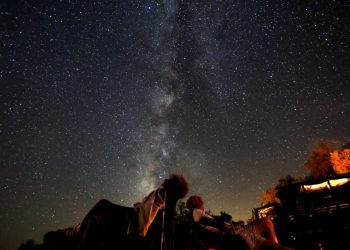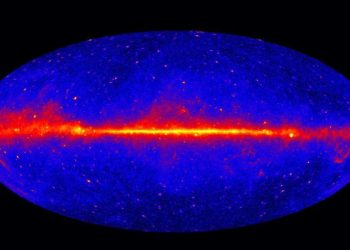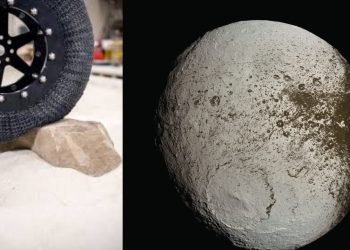Lasers aren’t just for cutting metal or scanning groceries. They can also carry usable electricity into the open air without a single wire.
A U.S. team sent electrical energy in the form of laser light about 5.3 miles and converted it back to electricity at the far end.
They described 800 watts of power delivered during a 30-second burst, as well as measured efficiency close to 20% at shorter ranges.
Wireless electricity revolution
Electricity runs everything from communications to drinking water. Getting electricity to the edge of a battlefield or disaster zone is slow, risky and expensive when it relies on fuel trucks.
Transmitting energy on demand could change that by eliminating long supply lines. It could also support off-grid sensors and remote research stations that now rely on heavy batteries or generators.
The method is called optical power beaming and converts electricity into a tightly controlled laser that travels through the air to a specialized receiver.
At the receiver, a parabolic mirror – a curved, parabola-shaped reflective surface that focuses incoming light into a single point – focuses the light onto photovoltaic cells, which then convert the light back into electrical energy.
In this system, a compact aperture helps trap incoming light, so that very little light escapes once it enters the receiver. This detail is important because any light leak is a waste of energy and a potential danger.
What made this test different
The 5.3-mile link-up was not a straight shot into clear skies. It passed through the thickest, dustiest part of the atmosphere, close to the ground, which is the most difficult path for a clean optical beam.
During testing, the team transferred more than a megajoule of energy, a benchmark that adds up when you consider the brevity of each shot.
The work took place at the U.S. Army’s White Sands Missile Range, a site built for high-energy laser experiments.
A key advancement is the Power Receiver Array Demo (PRAD). The device routes the incoming beam to dozens of solar cells arranged around the interior surface so that each cell shares the charge.
The receiver was designed and built in about three months and is described as modular and scalable to much higher power levels. This type of scalability is essential if future systems are to power vehicles or mobile bases.
Lasers and wireless electricity
A program manager at DARPA said the team’s achievements far exceeded all previous demonstrations of optical power radiation in terms of power and distance, adding that the result challenged long-held assumptions about how far laser transmission can reach.
Before that, public demonstrations reached shorter distances or less power. The new brand pushes both at once, which is why it stands out.
Unmanned aircraft are an obvious target for early use. A receiver on board a drone could take a charge mid-flight and stay in the air much longer without landing for batteries.
The larger plan of the program involves placing relays in the sky to create long chains of energy links. This would allow for vertical shots where the atmosphere is thinner and cleaner, making each jump more effective.
Safety, effectiveness and limits
No technology is magic, and radiation power requires tradeoffs. Eye safety, beam control and air quality are at the forefront, and systems include shutters, sensors and geofencing to keep beams away from people and aircraft.
Turbulence, aerosols and heat can scatter light and reduce efficiency, especially near the ground. Choosing the right wavelength, improving adaptive optics, and keeping paths short can help.
Engineers have been studying wireless optical power for decades. Early work focused on laboratory benches and indoor short links.
One article describes how the current program aims to build a flexible energy network using airborne relays. This concept borrows ideas from communication networks where multiple hops beat one long, fragile link.
How this fits into a broader perspective
This type of system will not replace the network. It complements cables by serving places that cables cannot reach quickly or safely.
In an emergency, a temporary optical link could power water pumps, clinics or communications centers while crews restore lines.
In defense, this could reduce the number of fuel convoys on the roads, reducing risks to people.
Questions about wireless electricity
What happens in the fog or dust. The short answer is that thick haze can scatter the beam and reduce yield, which is why planners prefer higher altitude legs or shorter paths close to the ground.
Could this work from space? Yes, although the engineering is difficult and any space-ground connection must handle safety, aiming, and atmospheric heating with the utmost care.
What to watch in the next phase
The next step is to show relays that pick up a beam and transmit it without losing too much. This proof will show whether long chains are practical.
Another important step is powering moving targets. Keeping a narrow point of light on a small receiver on a drone, an unmanned aerial vehicle commonly called a drone that flies without a pilot on board, is not easy, so tracking and stabilization must be excellent.
Wireless electricity and the future
The project shows how physics, materials and control systems meet real-world needs. It connects the concepts students learn in optics and electricity to a working system with measurable results.
It also shows why design choices are important. A compact aperture, parabolic mirror and well-matched solar cells make for a receiver that wastes less and delivers more.
Sending hundreds of watts across miles of air is now a repeatable demonstration. The pace of progress has surprised those who thought the atmosphere would always be the highlight.
There is still work to be done, but the door is open. The essential elements are on the table, and the rest is a matter of careful engineering and testing.
—–
Do you like what you read? Subscribe to our newsletter for engaging articles, exclusive content and the latest updates.
Check us out on EarthSnap, a free app brought to you by Eric Ralls and Earth.com.
—–









